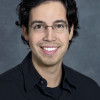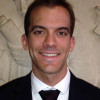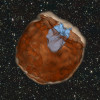News
David Donofrio to Lead Computer Architecture Group
David Donofrio—a veteran Computer Systems Engineer at Berkeley Lab—has been selected to lead the new Computer Architecture Group in the Computational Research Division (CRD). Read More »
First NESAP Post-doc at NERSC Takes on BoxLib
The first of eight post-doctoral researchers participating in the NERSC Exascale Science Applications Program (NESAP) is now working full time at NERSC. Read More »
NERSC, CRD Staff Win Best Paper Award at FTXS Workshop
Brian Austin of NERSC and Eric Roman and Xiaoye “Sherry” Li of the Computational Research Division won the Best Paper Award for “Resilient Matrix Multiplication of Hierarchical Semi-Separable Matrices” at the Fault Tolerance for HPC at eXtreme Scale (FTXS) Workshop. FTXS is held June 15-19 in Portland, Ore., as part of the 24th International ACM Symposium on High Performance Distributed Computing. The award included a prize of a new Playstation 4, which Austin donated to runner-up… Read More »
What the Blank Makes Quantum Dots Blink?
Quantum dots promise an astounding range of applications, if scientists can conquer their annoying habit of blinking. Researchers computing at NERSC recently ran simulations that offer new insights into the problem. Read More »
Spiraling Laser Pulses Could Change Nature of Graphene
A new study that involved large-scale simulations run at NERSC predicts that researchers could use spiraling pulses of laser light to change the nature of graphene, turning it from a metal into an insulator and giving it other peculiar properties that might be used to encode information. Read More »
New Employee Profiles - June2015
Introducing Goran Pejovic, Amartya Banerjee and Colleen Heinemann. Read More »
Meraculous: Deciphering the ‘Book of Life’ With Supercomputers
A team of scientists from Berkeley Lab, JGI and UC Berkeley, simplified and sped up genome assembly, reducing a months-long process to mere minutes. This was primarily achieved by “parallelizing” the code to harness the processing power of supercomputers, such as NERSC’s Edison system. Read More »
Supernova Hunting with Supercomputers
Using a “roadmap” of theoretical calculations and supercomputer simulations performed at NERSC by Berkeley Lab’s Daniel Kasen, astronomers observed for the first time a flash of light caused by a supernova slamming into a nearby star, allowing them to determine the stellar system from which the supernova was born. This finding confirms one of two competing theories about the birth of Type Ia supernovae. Read More »
Researchers Learn to Control Graphene with Lasers
New numerical simulations by Berkeley Lab Alvarez Fellow Alexander Kemper and his colleagues at Stanford University reveal how the quantum properties of graphene can be manipulated at ultrafast timescales with femtosecond laser pulses. This work opens a new area of research, where scientists can tune and control material properties with optical laser pulses. Read More »
Berkeley Researchers Honored for Contributions to Climate Data Analysis
Twelve Berkeley researchers are among the recipients of the 2015 Federal Laboratory Consortium for Technology Transfer’s (FLC) Interagency Partnership Award. The team was honored for contributing a number of parallel analysis and visualization tools to the UV-CDAT, a powerful toolset that aids climate researchers in solving their most complex data analysis and visualization challenges. Read More »







 Instagram
Instagram YouTube
YouTube








